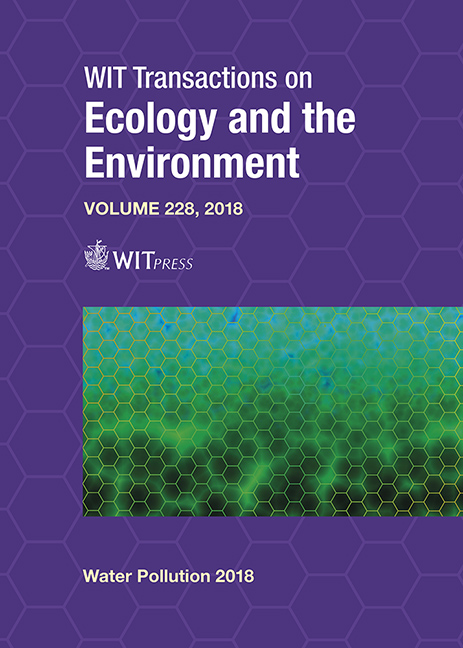PHYTOREMEDIATION OF WASTEWATER WITH THALIA GENICULATA IN CONSTRUCTED WETLANDS: BASIC POLLUTANTS DISTRIBUTION
Price
Free (open access)
Transaction
Volume
228
Pages
11
Page Range
53 - 63
Published
2018
Size
384 kb
Paper DOI
10.2495/WP180071
Copyright
WIT Press
Author(s)
GASPAR LÓPEZ-OCAÑA, RAÚL GERMÁN BAUTISTA-MARGULIS, SERGIO RAMOS-HERRERA, CARLOS ALBERTO TORRES-BALCAZAR, ROCÍO LÓPEZ-VIDAL, LILIANA PAMPILLÓN-GONZÁLEZ
Abstract
Constructed wetlands (CW) are efficient wastewater treatment technologies with low energy consumption. A constructed wetland with horizontal sub-surface flow was designed at a pilot scale involving Thalia geniculate as vegetation, with a wastewater loading rate of 204±66 L/day, using gravel as inert medium with a porosity and density of n= 56.3 ± 3.5 and 1666.7 ± 119.3 kg/m3, respectively. The reactor allows the biological treatment of 0.85 ± 0.05 and 0.66 ± 0.05 m3 of wastewater, with 4.2 days as a hydraulic retention time, favoring the removal of 85% of the average values of BOD with a k of -0.43 days-1. The pollutant analysis showed a pH value of 7.5 ± 0.1 in the reactor. The temperature (30.44 to 28.32°C), the electrical conductivity (4010 to 2922 μS/cm), the turbidity (144 to 17 UTN) and the bacterial biomass (30000 to 2646 mg/kg) decreased substantially from inlet to oulet across the reactor. The efficiency of the wastewater treatment in the CW is notable, nevertheless, keeping the appropiate hydraulic retention time is important in order to fully comply with the maximum permissible limits of 30 mg/L established in the Mexican environmental legislation (NOM-001-SEMARNAT- 1996).
Keywords
wastewater treatment, macrophytes, subsurface flow, pollutant removal efficiency





